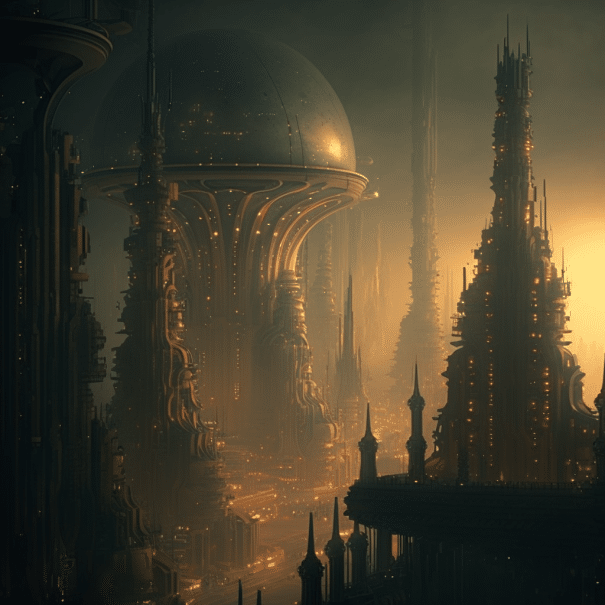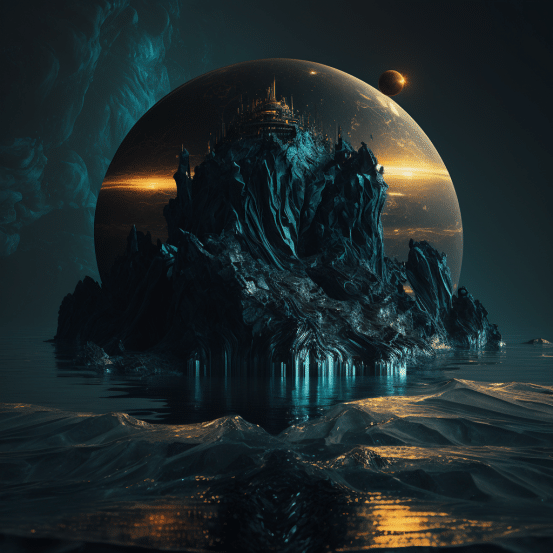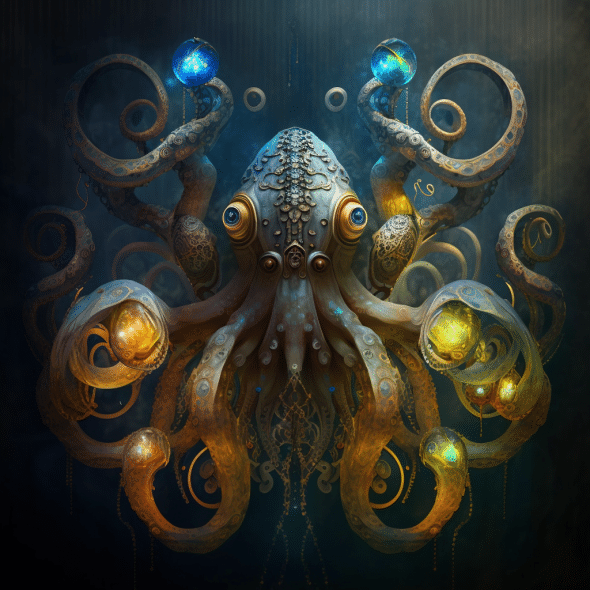Haven of the Angels, Part 2
Description (continued):
The ancient text tells us that there is a pause of several weeks in this entry before it begins again. This break in the recounting provides an opportunity to answer a simple question that deserves explanation. The question pertains to the manner in which the accounts of this traveler, and others like her, are attained and retained so that they could be put into the ancient texts of the Elzheni Astromentists. To express the question more plainly; how does the Astromentist take this journey, in their como-induced state, and at the same time document it? The Elzheni give us the answer elsewhere, in other of their docs. We do not need to include all of that here as it contains extensive detail of the Elzheni science. Instead we will provide a simple explanation which should provide the reader with a sufficient understanding of the process the Astromentists used. Each Astromentist’s journey actually includes two participants. The first is the traveler, the Elzheni who imbibes the como and falls into a deep state of affinity with the tendrils of Mental Energy that permeate the world. This is the Astromentist who takes “the journey” and they are known as the Caller. The other Astromentist is a companion to the Caller known as the Listener. It is the job of the Listener to maintain a connection with the Caller’s mind, the Mental Energy contained within them. This connection allows the Caller to transmit an account of their journey as it takes place, and it allows the Listener to immediately transcribe that account into a written form. Given that many Astromentist Callers do not survive this journey it is a great benefit to have a strong Caller-Listener bond so that, even if the Caller is lost and unable to return, the precious knowledge they gain has already been collected. The Caller and Listener are often Elzheni who have worked hard to form a particularly strong bond between their Mental selves, but that is another story.
Having elucidated the Caller-Listener mechanics we will now continue with the next part of the account from Eharria, the ancient Elzheni Astromentist.
“I cannot tell how long we have been traveling since we left the Fekxtah planet Chayffen behind us. My Energetic companion, the shard of pure Mental Energy that has no name, has been a welcome partner to me on this journey. It has been useful and steadfast during our time together. However, it seems to be weakening in a way that I do not understand as we travel further into the deep darkness. It seems as if I detect fear. But that cannot be. A Mental Avatar is not the same as an Emotion Avatar and cannot experience feelings. Or, so we believe. I am thinking this may not be entirely true. Perhaps the great corruption of the True Elements, that led to the creation of the Six Energies, did not divide these Six as neatly or as cleanly as we have believed. It is known that Emotion Energy and Mental Energy are the two Inner Energies so perhaps there is a connection between them that we do not yet understand.
I think of this and other things during our long journey, and I try to bring comfort (if there is such a thing) to my companion. The darkness and emptiness that surrounds us is so complete and so limitless that we may despair, or, I should say, I despair and I worry that my Avatar companion may become infected by my own feelings as well as the endless darkness. I fear that if it weakens it may decompose into nothingness, and leave me drifting aimlessly in a cosmos too vast to comprehend.
I send these thoughts to you, darling Estellannon, my companion and Listener, but I can no longer feel your presence. I have sensed some things, but they were distorted and so fragmented that they were incoherent. I am not now sure if they were real or if they were no more than fabrications created within my own mind. I fear for my sanity in this bleak black. It is almost unbearable when I think of how far I am from home. I take some small comfort in knowing that I have traveled further than any other Astromentist, but will any know of this? Are my thoughts carried to you dearest Estellannon? Do you Hear me? Are you Listening?”
Over the next week the Calls from Eharria were infrequent and intermittent, and comprised only fragments of thought and cries for help. The notes from Estellannon say that she detected fear and desperation from her Caller, and was concerned that Eharria was losing her mind and that her companion may have dissolved into nothingness. Then on the eighth day since her last coherent transmission there came this.
“I see something but what I see cannot be. The Mental Avatar that has been my constant companion for these many days (months? years?) has faded almost into nothingness. It is but a wisp of Energy that I comfort and feed with my own Energy as best I can. But, it is too weak to confirm whether what I see is something seen or if it is unreal and no more than a sign of my own mind’s deterioration that leads to my eventual evaporation into the nothingness that surrounds me.
I don’t know if you can hear me, Estellannon, but I must tell you what I see, or what I believe I see. There is a field of objects before me. They are of every imaginable shape and size and are scattered without sense throughout this dark space so very far from Oma. I seem motionless and, from this distance, lifeless, like dry detritus, desiccated debris that is ancient beyond description or understanding. How I know this I don’t understand, but I do. They continue as far as my mind’s eye can perceive, extending ever away from Oma, but instead of a plane of them, like the orbits of Oma’s children that circle around her, they extend above and below. They seem to form a great sphere that contains all of Oma and Her Family as a womb might encase a life inside of it.
I draw closer and as I do, I think that it sings to me.”
The message stops here and continues hours later.
“I have reached the nearer of the objects, Estellannon. I can now see that they are real, and not my imagination, and I was wrong; they do move though almost imperceptibly. They seem to all be adrift, uncontrolled without direction in the endless space. They are dusty, rocky shards, and cold stone that forever circle around their center, which is without doubt Oma.
But, there is more. My Avatar companion has revived. It seemed to gain sustenance as we entered this field of broken debris. I believe that the objects here have healed my Energetic companion in some way. This is only a guess for I have no proof, but it somehow seems right to me. And, I myself feel uplifted. Perhaps it is simply that the burden of endless emptiness has been lifted from me and hope has returned.
Now we will rest and continue to float into the vastness of this place, and I can now hope, Estellannon, that you may yet hear me.”





